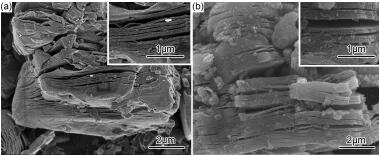 PDF(3329 KB)
PDF(3329 KB)


 PDF(3329 KB)
PDF(3329 KB)
 PDF(3329 KB)
PDF(3329 KB)
剥离时间对二维Ti3C2吸附染料污染物性能的影响
 ({{custom_author.role_cn}}), {{javascript:window.custom_author_cn_index++;}}
({{custom_author.role_cn}}), {{javascript:window.custom_author_cn_index++;}}Effect of Etching Time on the Adsorption Performance of Two-dimensional Ti3C2 for Organic Dyes
 ({{custom_author.role_en}}), {{javascript:window.custom_author_en_index++;}}
({{custom_author.role_en}}), {{javascript:window.custom_author_en_index++;}}
| {{custom_ref.label}} |
{{custom_citation.content}}
{{custom_citation.annotation}}
|
/
| 〈 |
|
〉 |